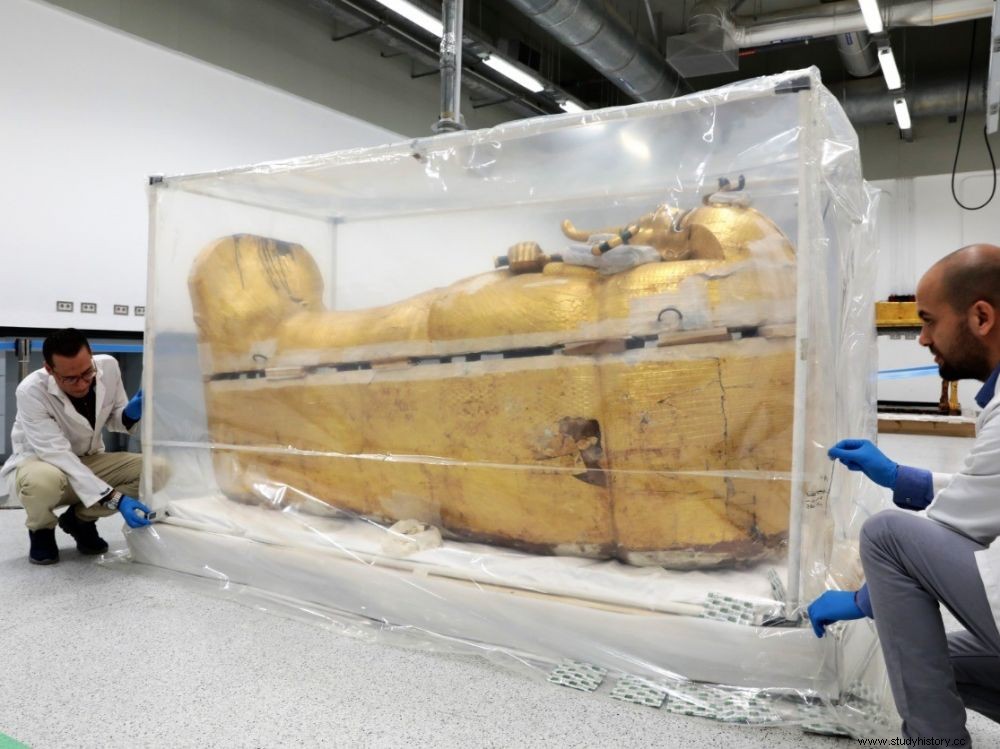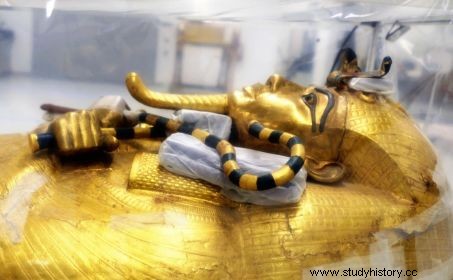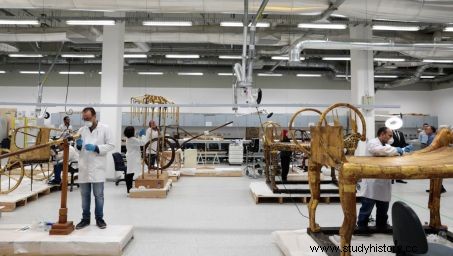Egypt has just presented the gilded wooden sarcophagus of Tutankhamun, being restored for the first time since its discovery in 1922.

The gilded wooden sarcophagus of Tutankhamun in a sterilization and stabilization chamber, in the laboratories of the Grand Egyptian Museum (GEM), Cairo (Egypt).
Egypt presented on Sunday, August 4, 2019, the gilded wooden sarcophagus of Tutankhamun, under restoration for the first time since its discovery in 1922. The restoration process began in mid-July after the sarcophagus which had been there for decades was transferred from the tomb of the famous pharaoh (KV 62) in the Valley of the Kings in Luxor (south) to the Grand Egyptian Museum (GEM), in Cairo.
The sarcophagus of the young pharaoh will be exhibited at the end of 2020

The golden sarcophagus being restored. © Khaled Desouki/AFP
"We show you a unique historical object, not just for Egypt but for the world ", said the Minister of Antiquities Khaled al-Anany, during a press conference held at the site of the Grand Egyptian Museum, near the pyramids of Giza, on the edge of the Western Desert.
The young pharaoh's sarcophagus will be on display along with other items from Tutankhamun's hoard at the end of 2020, when the gigantic new museum opens to the public. The restoration is expected to take eight months.

Funeral furniture from the treasure of Tutankhamun in one of the restoration laboratories of the Grand Egyptian Museum (GEM), Cairo. © Khaled Desouki / AFP
The outer sarcophagus in wood gilded with gold leaf, decorated with colored glasses and semi-precious stones, measures 2.23 meters, and represents the portrait of the sovereign bearing the symbols of royal power, the scepter and the flail. Over the past century, cracks have appeared "in the golden plaster layers, particularly those on the lid and base ", according to the ministry.
King at the age of nine
Ascended to the throne around 1333 BC, Tutankhamun is arguably the most famous pharaoh in history due to the incredible discovery of his intact tomb in the Valley of the Kings in 1922 by British archaeologist Howard Carter. Son of the pharaoh Akhenaten, husband of the legendary Queen Nefertiti, "the child king" would have come to power at the age of nine and would have died ten years later of malaria combined with a bone disease (read Hors- Series n°197 of Sciences et Avenir ).
